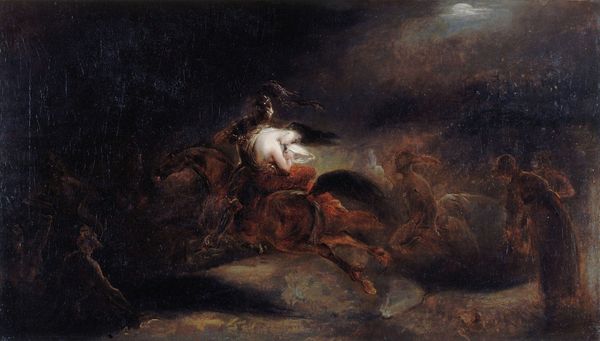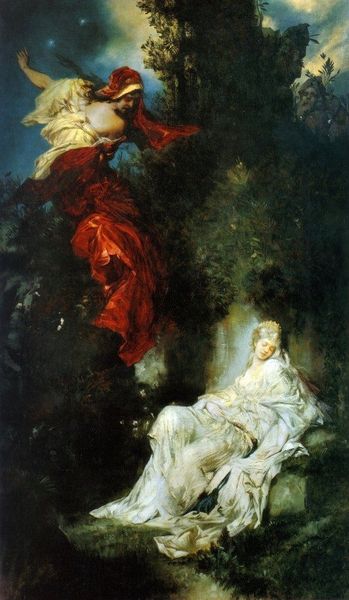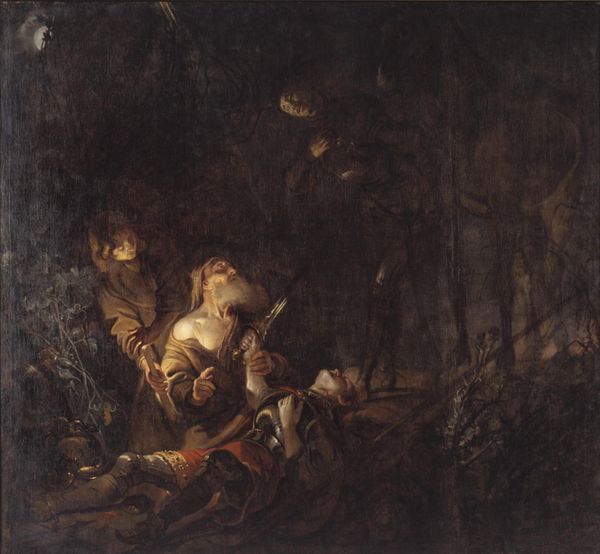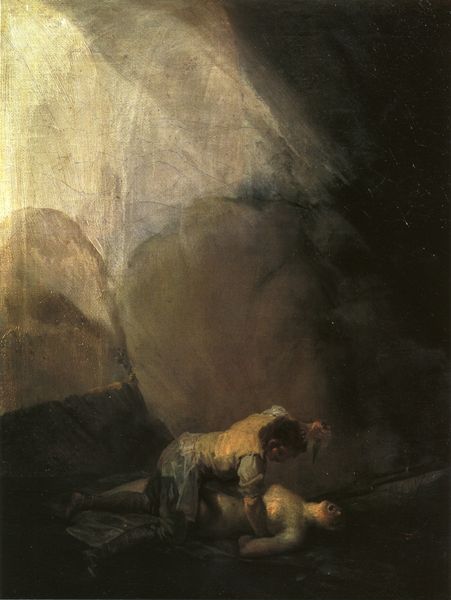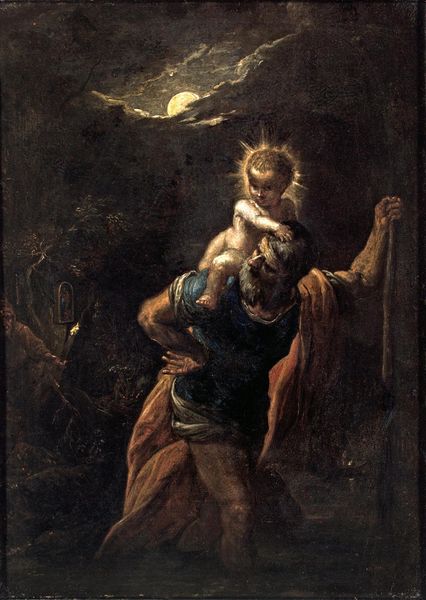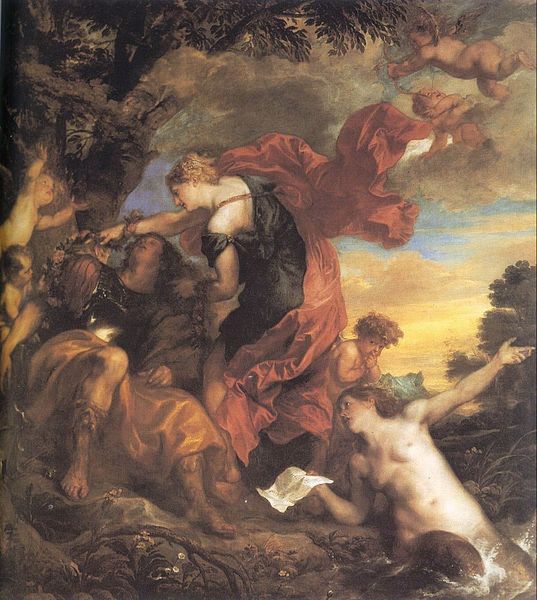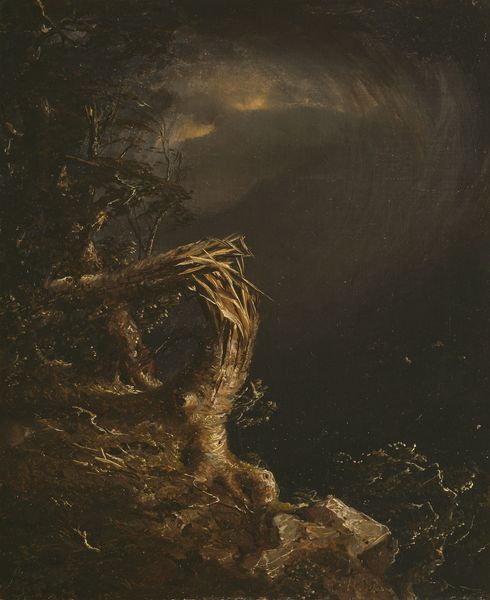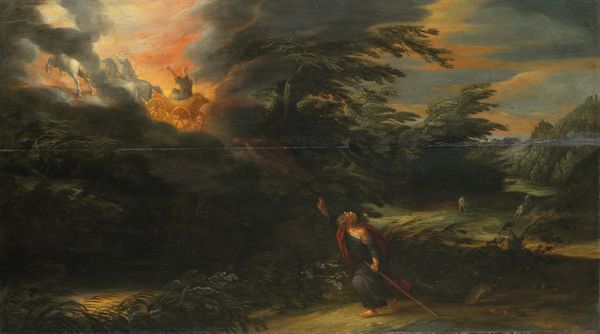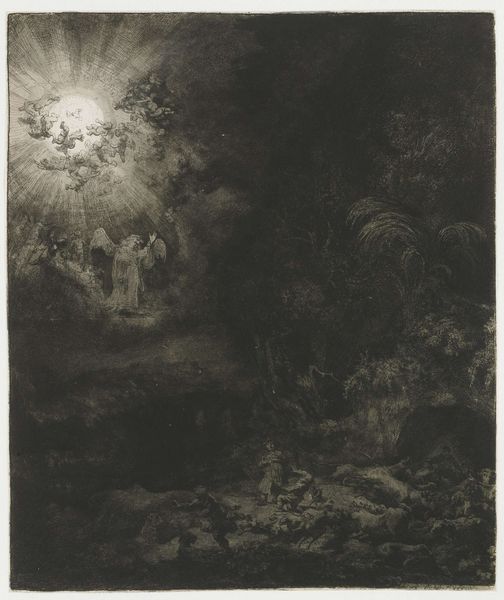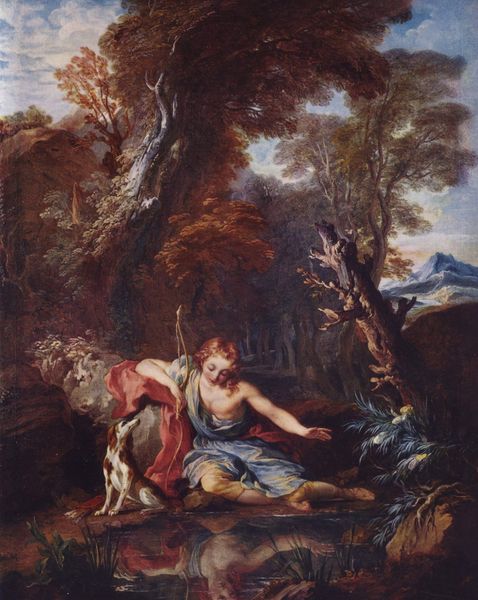
painting, oil-paint
#
narrative-art
#
baroque
#
dutch-golden-age
#
painting
#
oil-paint
#
figuration
#
history-painting
#
nude
Copyright: Public domain
Editor: Here we have Rembrandt van Rijn’s “The Rape of Proserpina,” painted in 1632. Looking at it, I'm struck by how dark and chaotic the scene feels, yet Proserpina is illuminated. What social context can we understand from this history painting? Curator: Well, you've hit upon something important there. Paintings like this, even when depicting classical mythology, are very much products of their time. The Dutch Golden Age, while known for its mercantile power, was still a deeply patriarchal society. Consider how the subject itself—a violent abduction—might have been received, not just as a dramatic story, but as a reflection of power dynamics and anxieties prevalent in Dutch society. What do you make of the darkness? Editor: It’s almost overwhelming, but it focuses my attention on Proserpina and Hades. It suggests a hidden world. Curator: Precisely! Rembrandt is using tenebrism, that dramatic contrast between light and dark, to highlight the key figures and create a sense of drama. It's important to remember that Rembrandt, like many artists of his time, was deeply invested in depicting human emotion. What do you think this adds to the statement made by the painting? Editor: I suppose it amplifies the emotional distress of Proserpina, drawing the viewer into that immediate moment of abduction. Are we meant to reflect upon the violence and patriarchal values embedded in mythology? Curator: I think that’s precisely one of the questions Rembrandt poses to his audience. By showcasing the event, he implicitly invites the viewer to question those power structures that govern society and reflect on their ethics and legality. Editor: Thanks. Now I see beyond the Baroque drama, there is this probing of ethical issues. Curator: Indeed. It reminds us that art, even historical painting, serves as a visual record that reflects societal ideologies of the time and place where it was created.
Comments
No comments
Be the first to comment and join the conversation on the ultimate creative platform.
